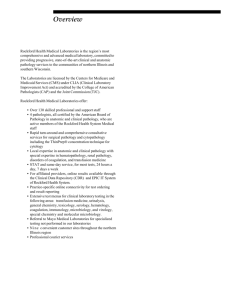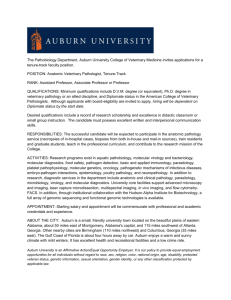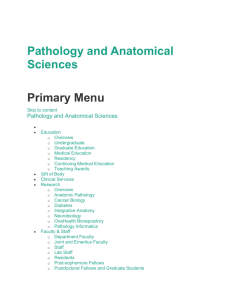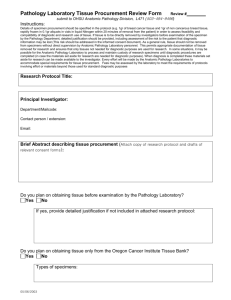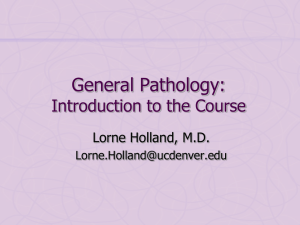TSP Historical Vignette Giovanni Battista Morgagni (1682
advertisement
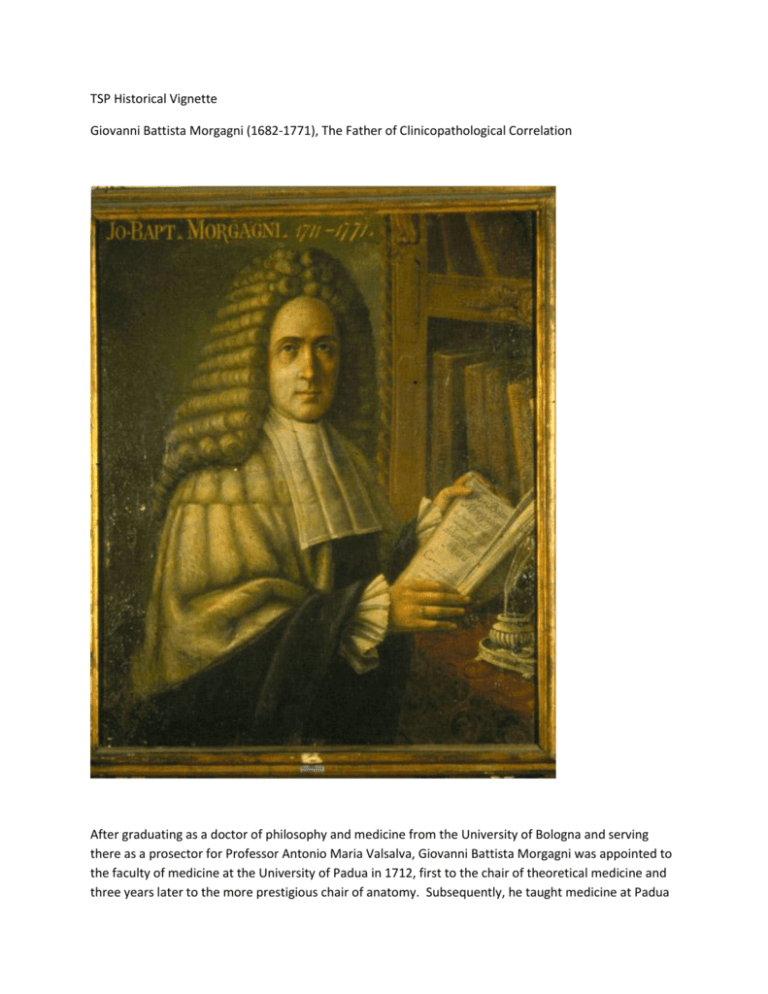
TSP Historical Vignette Giovanni Battista Morgagni (1682-1771), The Father of Clinicopathological Correlation After graduating as a doctor of philosophy and medicine from the University of Bologna and serving there as a prosector for Professor Antonio Maria Valsalva, Giovanni Battista Morgagni was appointed to the faculty of medicine at the University of Padua in 1712, first to the chair of theoretical medicine and three years later to the more prestigious chair of anatomy. Subsequently, he taught medicine at Padua with great success for the ensuing 59 years until his death on the 6th of December of 1771. This year, in commemoration of the 300th anniversary of his appointment, colleagues at the University of Padua are conducting historical (March 16, 2012) and scientific (March 23-24, 2012) seminars and other activities in recognition of the life and accomplishments of this major personage in the history of medicine. (See Meetings and Courses: http://anpat.unipd.it/ARCA). Morgagni divided his time between patient consultation, clinical examination, and anatomical dissection. He became known in Padua as his “Anatomical Majesty.” In 1761, Morgagni published his monumental treatise , De Sedibus et Causis Morborum per Anatomen Indagatis (On the Seats and Causes of Disease as determined by Anatomic Investigation), which was based on 700 postmortem reports linked to clinical history of the patients. This work was based on his three activities in medicine and represented the first scientific and comprehensive analysis of human diseases. Within 10 years of its publication, the work was reprinted several times and translated into several languages leading to widespread recognition. The work provided an authoritative refutation of the concept advanced by the Greeks and Romans that disease was due to an imbalance of the four constituent humors – blood, phlegm, yellow bile and black bile – the humoral theory of disease. Morgagni documented that diseases derived from specific alterations in specific organs. In the process, he established pathologic anatomy (morbid anatomy) as a science. There is an interesting story of the genesis of De Sedibus. Having finished his edition of Valsalva’s writings in 1740, and while on holiday, he was challenged by a young friend to put on record his own observations in follow up to the earlier work of Théophile Bonet, Sepulchretum: sive anatomia practica ex cadaveribus morbo denalis, published in 1679. Morgagni agreed to compose letters on his observations on the anatomy of diseased organs for the young dilettante, and he continued this work until 70 letters were composed. Those 70 letters constitute the De Sedibus et Causis Morborum per Aantomen Idagatis, which was published as a systematic treatise in 2 volumes (Venice, 1761), twenty years after Morgagni agreed to the project. See: http://en.wikipedia.org/wiki/Giovanni_Battista_Morgagni Following the lead of Morgagni, many European physicians and surgeons contributed to the development of the clinicopathological method, which was based on the correlation between observations of living patients and changes discovered in the autopsy room, and which lead to great advances in medical knowledge. Nezelof and Seemayer have summarized why this approach was of such decisive importance for the following reasons: 1. It lead to an understanding of the term lesion as a word indicating some characteristic anatomic change in a diseased organ; 2. It introduced an anatomic method and practice directed at characterizing clinical symptoms in terms of anatomic lesions, such as ulcer, effusion, sclerotic change, etc.; 3. It lead to the possibility of developing for an illness a coherent scheme including cause, lesions, symptoms, and outcomes, namely , a clinicopathological entity, that is, a disease. Giovanni Battista Morgagni is worthy of recurrent recognition because clinicopathological correlation continues as an essential core scientific process and skill for the medical discipline of pathology. Reference: Nezelof C, Seemayer T. The history of pathology: an overview. In:Damjanov I, Linder J, editors. Anderson’s Pathology, tenth edition. St. Louis: Mosby, 1996. p. 1-11. Submitted by: L. Maximilian Buja, M.D. Professor, Department of Pathology and Laboratory Medicine The University of Texas Medical School at Houston The University of Texas Health Science Center at Houston (UTHealth) With the collaboration of : Gaetano Thiene, MD, FRCP Professor, Cardiovascular Pathology Director, PhD School "Clinical and Experimental Medical Sciences" Department of Cardiac, Thoracic and Vascular Sciences University of Padua Medical School April 2, 2012


